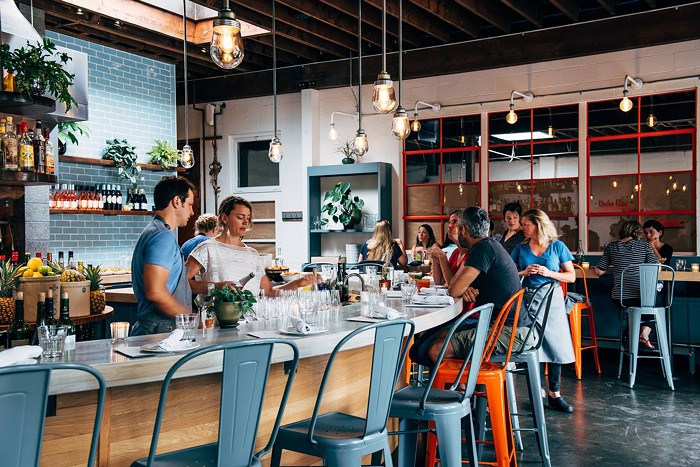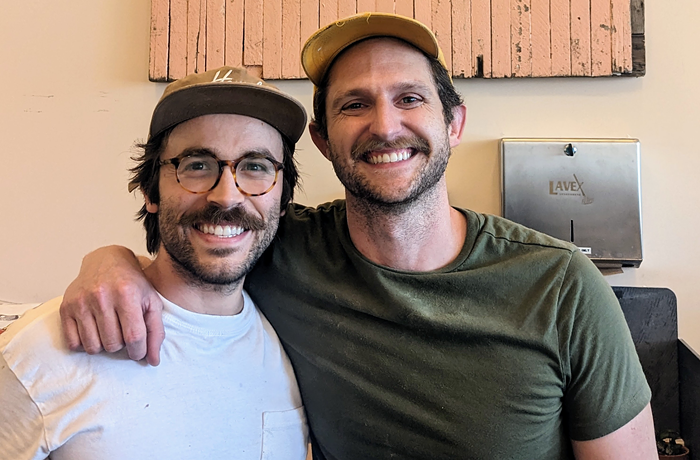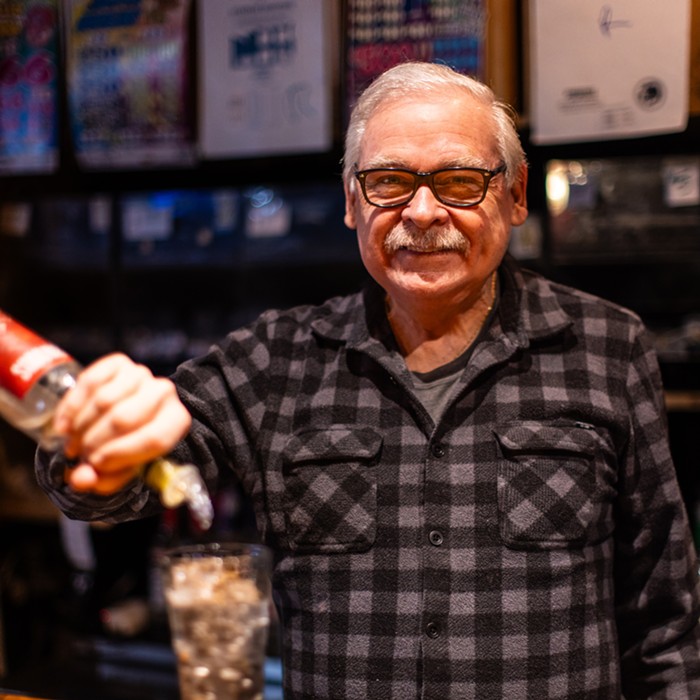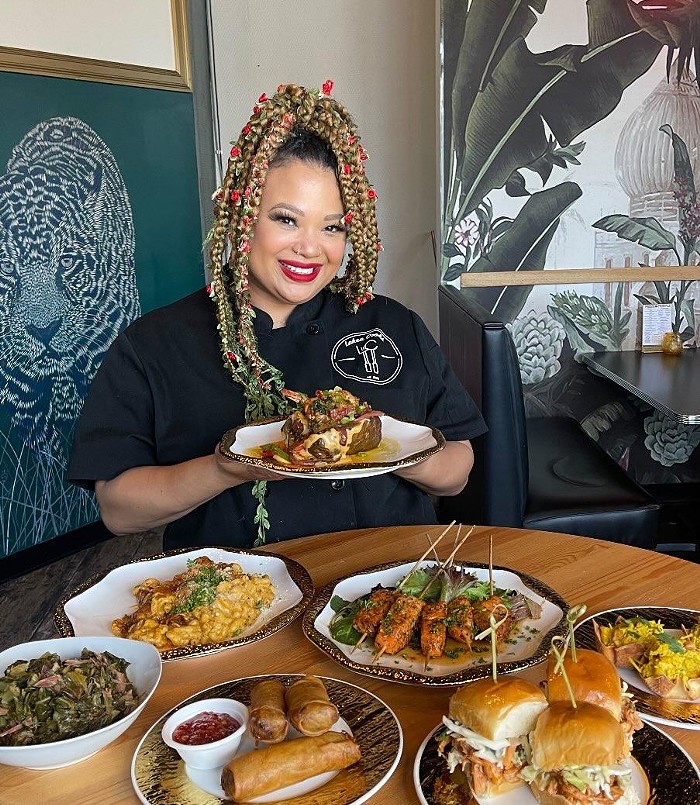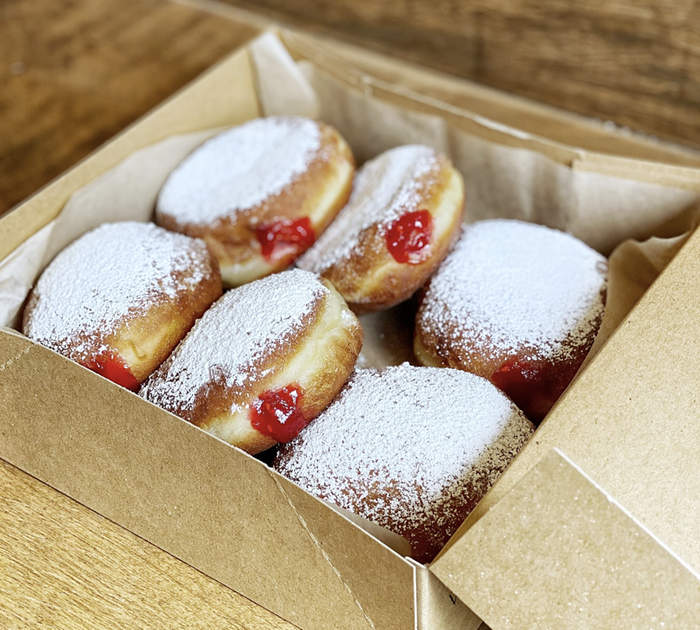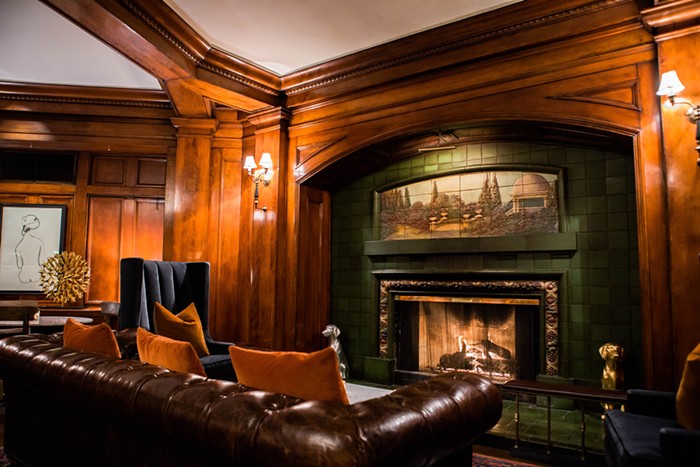"Styles, trends, and buildings change—especially now in Seattle," says Jana Katrusin, co-owner of the Queen Anne Beerhall, in her Slovakian accent. Lubo Katrusin, a tall, sturdy, bearded man, slides in closer to his wife to complete the thought: "We wanted to build something that will last."
The Katrusins know that they are lucky. At a time in Seattle when older buildings are being sold to the highest bidder, torn down, and replaced by mixed-use structures faster than you can say "residential units with retail on the ground floor," the couple is ensconced in a 1949 building with a soaring, 22-foot barrel-vaulted ceiling. In a city filled with people who dream of opening their own restaurant, even just a small one, the Katrusins, first-time restaurant owners, are overseeing a 6,800-square-foot operation with 25 taps, a full bar, a full kitchen, a grill station, and seating for more than 400 people.
Before it was the Queen Anne Beerhall, the building, located on the western edge of the base of Queen Anne hill, was the Cotton Caboodle Outlet. The owners moved their children's clothing business to another location years ago, but they wanted to preserve the building. They enlisted the help of local developer Scott Shapiro, who helped transform a vintage auto shop on Capitol Hill into Melrose Market, a thriving space with food retailers and restaurants. They also contacted Lubo's brother, a successful restaurateur who owns several European-style beer halls on the East Coast, who in turn brought Lubo and Jana into the project.
The vision of the Queen Anne Beerhall draws directly from Jana and Lubo's own childhoods in the Slovak Republic.
"On a sunny afternoon, you go to your local tavern or beer hall," says Jana. "The adults talk and drink beer while the children run around and play. This is what I remember as a child, and how we both grew up."
Converting the building took more than a year of renovation work led by Lubo, a carpenter. The ceiling, which had been painted white, was sandblasted to expose the natural wood, and lights sourced from a warehouse in the Czech Republic were installed. A 110-year-old brass tap handle was tracked down, retrofitted, then given its own altar-like space behind the bar where it now pours exclusively Pilsner Urquell, a Czech beer considered the world's first pilsner.
"We're not faking it," laughs Lubo, who also built the long wooden tables and benches that are part of the beer hall's distinct identity.
Queen Anne's 25 taps pour almost entirely imported European beers, with an emphasis on light, flavorful, easy-drinking lagers and pilsners, including a house beer brewed by Bitburger in Germany and Stiegl, a beautiful golden lager from Austria. Because these beers contain less alcohol by volume, you can drink liters of them (which come in delightfully large glass mugs that beg to be clinked loudly together in a joyful toast) and not be wrecked in the way you would be if you were drinking the heavy, high-alcohol, hoppy beers of the Pacific Northwest.
Drinking liters of beer requires sustenance, and there is plenty to be had at the beer hall. A massive grilling station serving an array of sausages—including smoked Danube kielbasa, weisswurst, and a basic frankfurter—is one of the first things you'll see when you enter the building. You order directly from the grill cooks (cash only) and can watch them flip your sausages over the flames.
While the sausages are tasty, the cooking can be hit-or-miss. Over the course of three visits, I enjoyed a smoked Polish kielbasa ($12) and a wild boar sausage ($12), but I was also served a severely overcooked bratwurst ($12), so charred that its ends were noticeably black. Although it was a busy night, a more conscientious cook would have noticed and known to fire another one. I would have happily waited another 10 minutes for an edible piece of meat. The sausages come with a trio of sides: terrific fries that are creamy on the inside and dusted with fresh herbs, slices of Macrina rye bread, and tangy sauerkraut dotted with black sesame seeds.
The grill is just one component of executive chef David Nichols's ambitious food program, which also includes full dinner service and weekend brunch. The meat-heavy menus include an extensive selection of charcuterie (smoked trout rillettes, cured steelhead, chicken liver mousse, duck confit) and items such as roasted bone marrow, beer-brined chicken, and braised lamb shanks.
A happy hour serving of smoked trout rillettes ($7) was delightful: a jar packed tightly with creamy fish that was lightened by a good dose of lemon and served with grilled rye bread and lively, herbaceous crème fraîche flavored with chive and dill. A familiar dish of deviled eggs ($5) was made new by pickling the eggs so their sourness countered the rich filling. The eggs were topped with fried oysters—their delicate crunch and briny flavor were welcome additions.
I found it much easier to focus on the short happy hour menu than the list of starters, of which there are 16, including oysters, oyster shooters, a Bavarian soft pretzel, charcuterie plate, cured fish board, venison tartare, Bavarian sausage hot pot, and shaved kale salad. The dishes are crowded onto a single sheet of paper, along with mains, sides, desserts, as well as the kids' and grill menus. At 11 by 17 inches, the menu is also physically overwhelming (and is accompanied by the similarly sized, two-paged beer menu).
With so many starters to choose from and share, the list of mains may seem like an afterthought, but it's actually where you'll find some of Nichols's strongest work. (Entrées here are very generous—likely more than one person can eat. Two starters and one main will more than easily feed two people.)
Hanger steak ($25) was grilled to a perfect, rosy medium rare. Its irony, deeply beefy flavor was enhanced by earthy roasted mushrooms and a nutty pistachio butter. A pool of dark, unctuous demi-glace sauce lined the plate—it bordered on being too decadent, yet it was impossible not to drag the meat through the sauce to sop up every possible bit of richness.
Kaesespaetzle ($18), thin starchy dumplings combined with Dungeness crab meat in a creamy white sauce, was similarly indulgent—and delicious. After just two bites of the dish, which is studded with unnecessary (but not unwelcome) pieces of smoky bacon, I was forced to put down my fork, take a break, and sip my beer. Then I'd promptly be drawn back into the dish, only to repeat the process over and over until the plate was empty.
There are other dishes that caught my eye, like seared venison loin, Wiener schnitzel, and whole roasted trout, but even after three visits, I felt like I was barely able to make a dent in the menu. The beer hall's general manager, Sean Klos, likes to emphasize that the restaurant has "something for everyone," and while that spirit of inclusion is admirable, it is also the main source of the kitchen's problems.
Vegetables dishes here show a spark of real creativity, but subpar execution renders them merely fine. A salad of marinated beets ($11) was beautiful to look at—chunks of magenta and golden beets tucked next to blood-orange segments that glistened like jewels and sprinkled with crunchy almond slices and shaved celery. But the taste didn't match—the beets had hardly been marinated and, relatively flavorless, were overpowered by the celery and parsley that garnished the salad. The dish cried out for sweetness, a good dousing of sherry vinegar and fruity olive oil.
Shaved brussels sprouts ($11) had similar problems. I loved the idea of serving them with charred broccoli, as well as the unexpected addition of sunflower seeds, but without massaging the sprouts with salt or tossing them with the lemony dressing beforehand, they tasted raw and acrid. They brought out the bitter notes of the broccoli, which was limp and soggy.
Many of these problems could be easily solved by shortening and focusing the restaurant's menu. If cooks weren't loaded down with hundreds of prep work tasks or keeping track of so many recipes, maybe they'd be able to get those beets marinating earlier and give those brussels sprouts a little more attention. And perhaps instead of an endless list of starters, smaller dishes could be broken up into more manageable sections with headings like charcuterie and vegetables.
Both Klos and the Katrusins say that they've changed the food menus based on their customers' needs and desires. I hope they continue to listen and adjust. The Katrusins have built a warm and convivial gathering place —they already have a steady flow of neighborhood regulars and, just like the beer halls back home, children happily run amid the tables while their parents linger over beers. Queen Anne Beerhall may still be a work in progress, but it does feel built to last.

